Tell us a little bit about yourself and what you do.
I am a Chicago-based artist, material researcher, and naturalist. I am passionate about ecosystem restoration, gardening, and sustainable eating.
Could you describe your practice as well as a bit of your process?
My practice centers on the body as it relates to technology and species. I primarily make sculptures that merge the ecological, the industrial, the decorative, and the erotic.
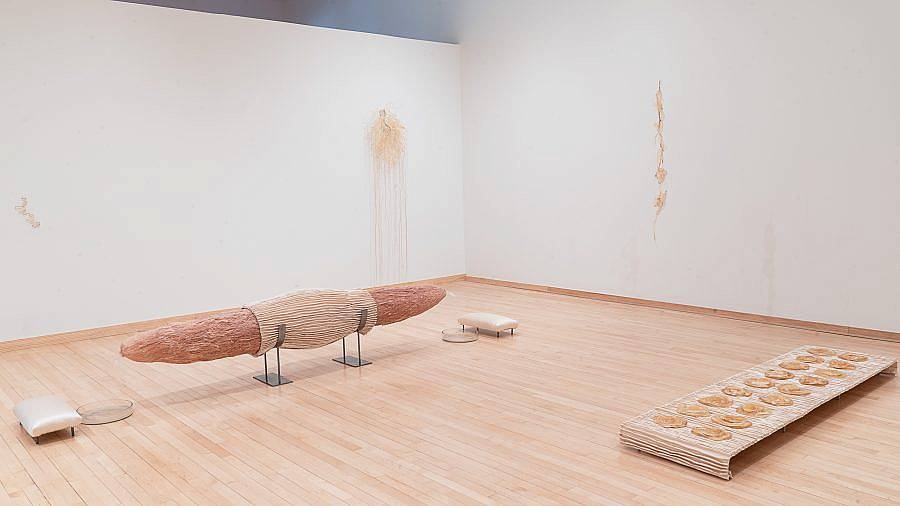
How did your interest in art begin and how did you get to where you are focused in now?
I have always been fascinated with the “natural” world – its striking colors, textures, and patterns. During my childhood, I spent much of my time in the forest with a magnifying glass, crouched down, exploring the world up close. I vividly remember the moss and lichens, forming lush, living carpets on the forest floor. I have always been deeply interested in historical garments and mythological creatures too. As a child, I learned to sew from my grandmother. I soon discovered that the playfulness of soft sculpture and fiber can embody the dynamic qualities of “nature”. Using careful handcraft and dye, these materials can also be transformed into wearable sculptures activated by human movement.
This led me to pursue an MFA in the Fiber & Material Studies program at the Tyler School of Art & Architecture. The rigorous, material-centric approach of this program fundamentally changed my practice. During the program, I began experimenting with biomaterials and no longer limited myself to the confines of the human form. The creative growth I experienced during this program has led me to where I am now.
A lot of your work plays between natural and artificial. Can you talk about the importance of this binary within your practice?
I view my work as a rejection of the binary placed on these seemingly conflicting notions. As life on earth changes rapidly, our seemingly well-constructed framework to systematize the world has begun to dissolve. How do we navigate the biophysical material world when there is no distinction between the natural and the artificial? This is perhaps one of the most challenging questions we now face. Engaging with this question has profound implications, fundamentally altering the way we understand ourselves and our natrificial creations in relation to the world.
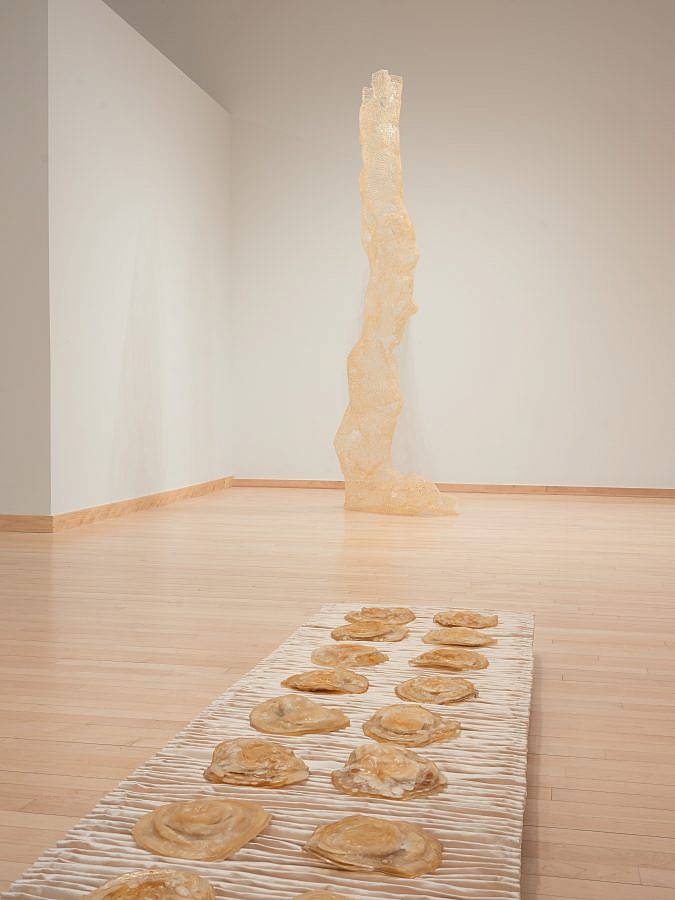
This is one of the central questions which guides my practice. For instance, my work titled implant bloom / jelly ridge features more than a dozen gelatin and wax forms arranged in pairs on a pleated satin cloth. This placement evokes an elaborate tablescape, a mammary ridge, a series of breast implants, and a synchronized swarm of beached jellyfish. The sculpture draws a humorous visual connection between silicone breast implants and beached jellyfish, calling attention to their simultaneous global surge. While jellyfish blooms are a “natural” occurrence, their frequency and intensity continue to increase as oceans become warmer and more acidic. Although these blooms radiate with a gelatinous glimmer, they are the harbinger of dying oceans. At what point do jellyfish blooms become “artificial” — a manufactured product of human intervention with Earth’s biogeochemical cycles? This venture in natrificial realms has been stitched into the pleated satin cloth, resembling the conveyor belts used in mass manufacturing and global distribution.
What is influencing your work right now?
I am currently influenced by mechanized ecosystems — natrificial systems designed for the extraction and commodification of nonhuman bodies. These energy-intensive ecosystems are modeled after plantations and monocultures, and often contain transgenic organisms. I am fascinated by fish and shellfish farms, especially those that have developed in non-coastal regions such as the Midwest. I am inspired by the lustrous sheen of satin and steel. I look to haute couture gowns, Georgian home interiors, and machinery. I am inspired by the molting process of crustaceans and arachnids, particularly the soft, naked, and slightly swollen body that freshly emerges from the exoskeleton. Gourmet food styling and the pomp and pageantry of elite dining experiences are additional things that influence me.
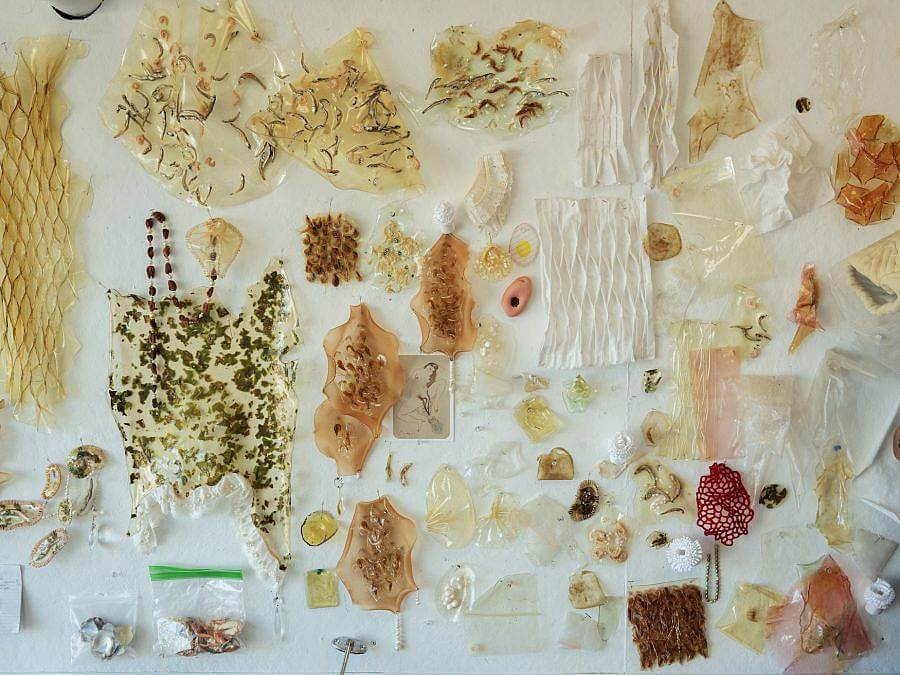
Describe your current studio or workspace.
I recently finished graduate school, so I am in the process of setting up my new studio. My studio will be in the second-floor attic space of a home in Lincoln Park, Chicago. I look forward to reassembling and continuing to add to my wall of material tests and samples. This is one of the most important components to my studio because I can visualize my material research all at once. I can easily move things around, creating a dynamic space that allows the materials to be in conversation with me and with one another.
You have a background in environmental science and your work touches on themes regarding this. How does this background inform your practice? How does it challenge you as an artist?
My background studying environmental science deeply informs my practice. It gives me a sense of urgency. Learning about our changing world can be overwhelming and frightening. Art-making presents an opportunity to work through these feelings. In Staying with the Trouble: Making Kin in the Chthulucene, Donna Haraway writes, “To think with is to stay with the naturalcultural multispecies trouble on earth.” This idea guides my practice because making is a form of thinking; to think with is to make with.
While I am not a material purist when it comes to choosing ethical materials, I think critically about the materials that I use. I intentionally experiment with materials that are linked to extraction, such as gelatin, intestinal submucosa, and petrochemical resins. These disturbing materials imbue my work with real multispecies consequences.
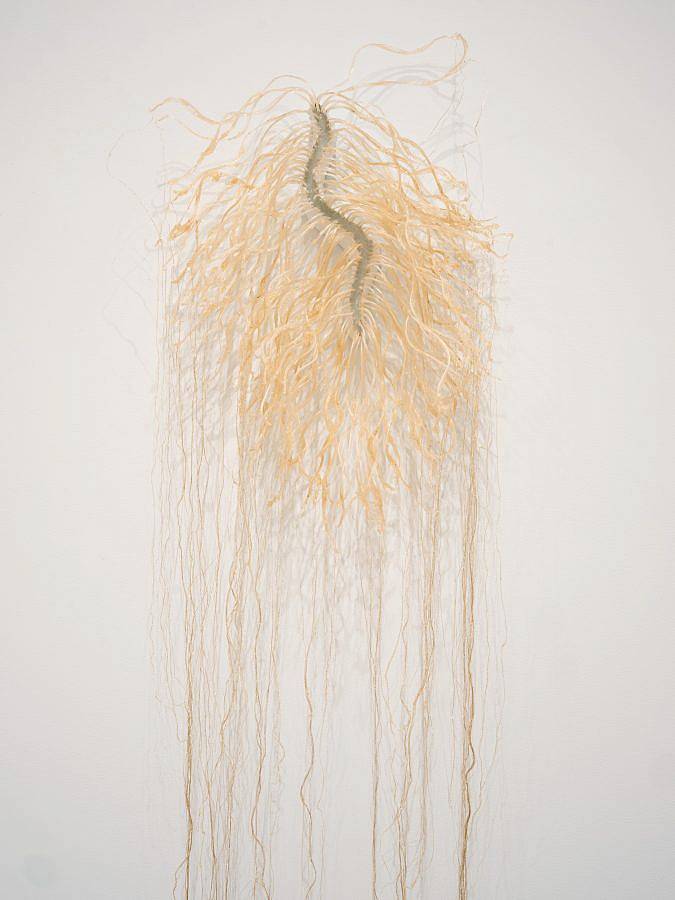
Materiality feels very important to you. Can you talk about your material processes? And more specifically can you talk about your transition from your more fiber/costume works to the work you’re making now?
Materials are active agents in the art-making process. Their inherent properties influence the way we work with them and ultimately the art we make with them. The artist’s hand and the material shape one another; they are collaborators. I am excited about the possibilities of biomaterials. Lately, I’ve been working with gelatin and algae-based bioplastics. I am attracted to these edible, bodily materials, particularly in the way that we respond to them. Slimy, creamy, and fleshy– these are sensuous textures that touch upon fundamental aspects of the human experience. I am interested in materials that engage the senses of taste and smell, as they are intimately tied to both experiences of attraction and aversion. Engaging with these senses invites viewers to indulge in the work. How does our relationship to an artwork change when we are able to experience the taste and texture of the material from which the work is made? When materials are digested, they are transformed and absorbed into living tissue. This physiological process allows the work to become part of the viewer; it is assimilated into their cells.
I transitioned away from making fiber-based wearable sculptures because that way of making no longer resonated with me. While visually and materially quite different, there is a unifying element between my old body of work and my current body of work. They are both explorations of hybrid bodies, blurring the boundaries between human and nonhuman.
What are some recent, upcoming or current projects you are working on?
Currently, I have been conducting material research and experiments with petroleum jelly, bleach, methyl cellulose, and water pumps. I am excited to see where this leads!
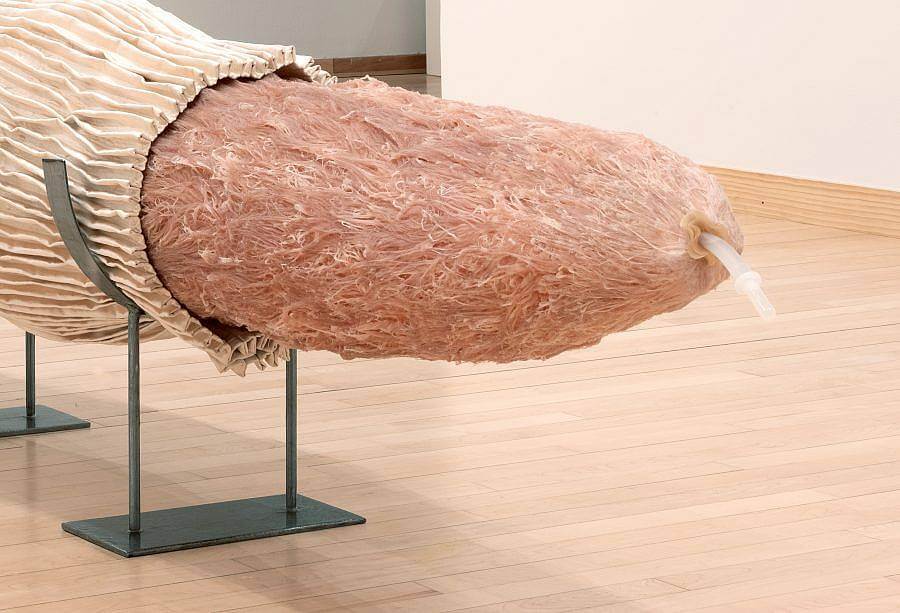
What do you want a viewer to walk away with after seeing your work?
My work is not predictive; it is descriptive. My work teaches us more about ourselves and the present world. I challenge my viewers to think more critically about the often-troubling interspecies relationships that have emerged from the colonial desire for domination over “nature”. Why do we experience pleasure even at the expense of ethics? The mental distress which arises from cognitive dissonance, the state of holding two conflicting ideas, is one of the primary responses my work evokes. I want my viewers to experience both pleasure as well as disturbance from the perverse beauty imbued in my work. I want my viewers to leave with the uncanny feeling that emerges when something is not quite placeable.
What do you collect?
I mainly collect specimens and antiques. So far, my collection includes Federal-style convex mirrors, shells, coral, marble obelisks, Blue Willow china, minerals, and more. I believe that there is a strangeness that exists in beauty which keeps people perpetually curious. It is important to surround yourself with things that keep you curious.
What have you been listening to/reading lately?
I have been reading a lot of science fiction lately. I recently finished The Left Hand of Darkness by Ursula K. Le Guin and have started reading The Dispossessed, another novel by Le Guin. I am looking forward to reading Animal Alterity: Science Fiction and the Question of the Animal by Sherryl Vint. I’ve been listening to Dolly Parton and Men I Trust while working in the studio.
Photo credit: William Toney
